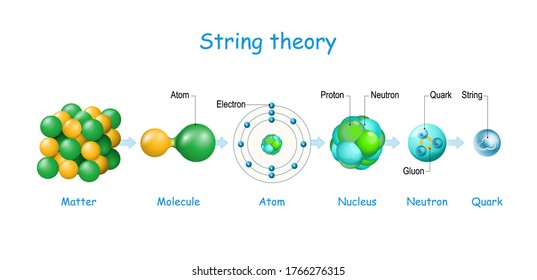

If the mass of the top quark is found to be heavier than expected, meaning the universe has high energy, the energy carried through space could collapse in as little as 10 billion years. It will determine whether the universe is in a high or low energy state. The fate of the universe may rest in the hands of the top quark - which plays a very important role in both the weak and strong fundamental forces of the universe. Now this strange fact about quarks may surprise you. Computer models have to be used to determine their mass by simulating the interaction between quarks and gluons - the particles that glue quarks together. The energy required to remove a quark from a proton or separate two quarks immediately produces an antiquark, which quickly turns a single quark back into a hadron. They can never be seen alone due to a property known as color confinement. So why are quarks so difficult to measure? Quarks can also change from one form to another - meaning up quarks can become down quarks, according to LiveScience. For example, all quarks have the same spin of ½ with up, charm, and top having charges of ⅔, and down, strange and bottom having charges of -⅓. 1 The neutral Kaons K 0 s and K 0 L represent symmetric and antisymmetric mixtures of the quark combinations down-antistrange and antidown-strange. The major difference between these flavors is their mass, however, some also differ by charge. Mesons are intermediate mass particles which are made up of a quark-antiquark pair.Three quark combinations are called baryons.Mesons are bosons, while the baryons are fermions. Surprisingly, there are six different “flavors” of quarks: up, down, strange, charm, bottom, and top. The antiparticles of quarks, or antiquarks, also appeared around this time. SEE ALSO: Intergalactic Particles Spotted at South PoleĪccording to physicists, quarks first appeared 10 -12 (0.000000000001) seconds after the Big Bang when two of four fundamental forces (the weak force and the electromagnetic force) separated. The idea of quarks first came around in the 1960s when researchers using the Stanford Linear Accelerator Center found that electrons were scattering from each other more widely than their calculations suggested - indicating that protons and neutrons were made of even smaller particles.

But how do we even know they exist if one has never been directly detected? It comes down to indirect effects - how quarks influence their surroundings. They are fundamental particles that make up subatomic particles called hadrons, the most stable of which are protons and neutrons. Quarks - the building blocks of matter - are not only impossible to see, but they are extremely difficult to measure.


 0 kommentar(er)
0 kommentar(er)
